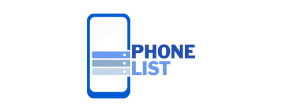Raster and vector graphics serve distinct functions in the realm of digital design, each with its own advantages and limitations. Raster images are made up of pixels, making them ideal for capturing intricate details and a wide range of colors, such as in photographs. However, they can lose quality when resized. On the other hand, vector raster to vector conversion service use mathematical equations to define shapes, allowing for infinite scalability without any loss of quality. High-quality raster to vector conversion allows designers to harness the best of both worlds, transforming pixel-based images into versatile vector formats. This process offers numerous benefits that enhance the overall effectiveness of visual content.
Improved Scalability and Versatility
One of the primary benefits of high-quality raster to vector conversion is the enhanced scalability of images. Vector graphics can be resized to any dimension without losing clarity or detail, making them ideal for various applications, from business cards to billboards. This scalability is particularly valuable for businesses that need to maintain a consistent brand image across multiple platforms. By converting raster images to vector format, designers can create graphics that adapt seamlessly to different sizes and formats, ensuring that visual elements remain sharp and professional. This versatility allows for more dynamic marketing materials and a cohesive visual identity.
Cost-Effectiveness in Design Projects
Investing in high-quality raster to vector conversion can also lead to significant cost savings in the long run. Vector images are generally smaller in file size compared to high-resolution raster images, which can reduce storage costs and improve! loading combining mobile lead generation with voice search optimization on websites. Additionally, because vector graphics can be easily edited and modified! businesses can save time and resources when making changes to their designs. This flexibility means that updates can be implemented quickly without the need for recreating images from scratch. For companies that frequently adjust their marketing materials, this efficiency translates into tangible cost benefits.
Enhanced Print Quality and Consistency
Another key advantage of converting raster images to vector format is the improved print quality and consistency. Raster images can suffer from chine directory and loss of detail when scaled for print, leading to subpar results. In contrast, vector graphics maintain their integrity and sharpness, regardless of size. This is crucial for businesses aiming to produce high-quality printed materials, such as brochures, flyers, and signage. High-quality raster to vector conversion ensures that brand logos and graphics appear crisp and professional! in all print applications, reinforcing brand credibility and enhancing customer perception.

